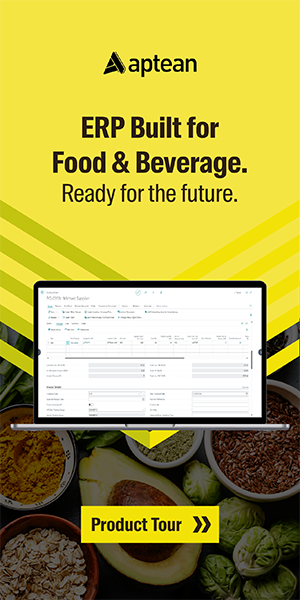Back in 2019, I had the pleasure to author a piece for ERP today on why platforms matter. Since, the industry has not stood still, and platforms have become stronger, broader and more important for all ERP vendors. Back then we looked at SAP, Oracle, Workday, Infor and Unit4 from a perspective of elasticity, compliance, innovation speed and total cost of ownership (TCO).
Vendors have realised that they need to support their customers better and enable the key three usage scenarios that form an EAP – the traditional extend and integrate use cases, but more importantly now the build use case. The latter emancipate the EAP offerings with the PaaS offerings in the market, albeit with a more limited scope, typically limited to the realm of the ERP system.
What matters for EAPs – six criteria
> Maturity of offering
Like all other software, EAPs get better over time, and the novelty versus maturity of an EAP platform is an important differentiator for enterprises selecting one. The EAP needs to function reliably and well for the enterprise to succeed.
> Completeness of EAP portfolio
Enterprises need to know that their EAP platform supports all three key EAP usage scenarios: extend, integrate and build. Moreover, the need for portfolio completeness also extends to the singular functions of an EAP; those functions need to be workable, complete and finished. Half-baked automation and functionality are not acceptable in enterprise solutions.
> Innovation track record
Software is not fixed in its capabilities, and the speed of innovation as well as a track record of successful innovation matters. Enterprises should try to project the future innovation of an EAP vendor based on its record of past innovations.
> Expected total cost of ownership
Enterprises always need to look at the cost of software holistically – in this case, the TCO of an EAP platform.
> Availability of services
Enterprises cannot do it all alone: they need help from professional services vendors and system integrators. The availability of these services defined by capacity and talent is crucial for the success of an EAP platform.
> CxO comfort factor
People buy from people and each selection situation is unique. But CxO buyers must be comfortable with the vendor overall as well as being comfortable with the vendor’s offerings.
SAP: Can BTP transform SAP client’s system landscapes?
SAP has abandoned the SAP cloud platform (CP) branding in favour of business transformation platform (BTP) – only the future will be able to tell if the marketing gurus have been right. Under the hood BTP runs existing former CP and even
NetWeaver capabilities as proven capabilities to run both extend and integrate use cases. With the acquisition of AppGyver early in 2021, SAP has bolstered its capabilities in the important no code/low code field and with that the build use case. More recently it has also beefed up its advanced business application programming (ABAP) capabilities at TechEd. The combination gives enterprises the key capabilities to build their necessary application. Overall SAP has been consumed with bringing together its previous cloud acquisition on the SAP BTP platform, starting with single sign-on, a common portal, more common UX etc. The price has been a lot of internal focus, but it is for the benefit of SAP customers as they expect and deserve a better integrated automation portfolio. SAP has made substantial progress supporting its multi-cloud offerings, as now almost all of its applications are running across the major cloud infrastructure providers. They all like SAP workloads, as due to SAP’s in-memory database HANA, these SAP instances are all powerful and with that revenue generators for the cloud infrastructure vendors.
Oracle: It is good to be on top – easy to get there, hard to stay there?
Larry Ellison’s vision of the integrated ‘chip to click’ stack has been proven and is now delivering its benefits. More specifically, customers have realised that the integrated technology stack, from the silicon on the chip to the user click in application has massive TCO and agility advantages. More importantly though, customers are upgrading their Oracle database and moving to the Oracle Cloud, which has ambitious expansion plans for 2022. It is now likely that Oracle can convert most of its on-premise database workloads to workloads that will run in the Oracle Cloud. For Oracle ERP customers this is a key development, because it means their applications will run on a major cloud. With its deep tradition in tools and application development, not to mention the ownership of Java and MySQL, Oracle is a strong player on the PaaS side as well, allowing its customer to utilise its full PaaS arsenal to be used for extension, integration and build use cases. Long term functional ‘treasure’ like Oracle APEX emerge to power the build use case. Given the overall lead of Oracle applications in terms of both functionality and maturity, Oracle is in a very good, if not in the top position across the ERP competitors when it comes to EAP capabilities. But it is one thing to get to the top – it is another to stay on top.
Workday: As the new platform takes form, when will customers be on it?
Workday has scaled back its large-scale vision of a Workday Cloud Platform with strong build scenario support to a focus on integrate and extend use cases. The latter recently was significantly better supported with the release of Workday Extend. Workday has shown it can run its technology stack on AWS and has several customers live on AWS. In 2021, Workday embraced a multi-cloud strategy as well, offering customers support for Google Cloud. That makes Azure the only major cloud infrastructure player not supported, but it will only be a question of time from my expectation when support will be announced. The big development to watch is how Workday will be able to convert its existing customers to the public cloud platforms. This is key for leveraging the elasticity of the public cloud for AI/ML processes, and elasticity is what the existing environments of customers do not have.
Infor: Have a platform, can we sell it?
Infor has the most mature EAP platform across the five vendors we highlight here, starting out with its Ion platform for integration more than a decade ago. Infor is as well the only vendor to feature a full data lake to support analytical and AI/ML processes. The biggest challenge for Infor’s EAP platform is less the platform itself than the vendor itself – which understands itself as an applications vendor first and foremost. The sooner Infor understands that it is a platform powered application vendor and that its platform is a differentiator, the better for customers and the vendor. But for now, much of Infor’s EAP platform is the vendor’s best kept secret – ‘hiding’ in plain sight. It needs a multi-cloud strategy though, and while its partnership with AWS was the right start and is doing well, customers have data gravity and other considerations which make them use other cloud infrastructure vendors.
Unit4 has a platform, how long does it take to build the apps?
Like Infor, Unit4 has one of the most modern EAP platforms in the market. Using and leveraging Azure early, creating a services mesh to power its ERP applications, enabling extension and integration services, its assistant Wanda and more, Unit4 is extraordinarily strong when it comes to EAP capabilities. Ironically, it is taking the vendor a long time to build its new ERP offerings, which also affects the success of its EAP. But overall Unit4 has done platform the right way – starting with the creation of an EAP platform which is modern and future-proof, and then building its ERP applications. At its recent user conference, X4U, Unit4 strengthened the EAP use case of Integrate, going a step further on integration; with vendor-supported vendor integration, the result is an acceleration of go live dates. Given the SMB and vertical focus, Unit4 may be able to pull off its future with only Azure as its support public cloud platform.
The Takeaways
Platforms matter for enterprise application success in general and especially for ERP platforms. They are at the heart of all value creation of an enterprise, and need to be well integrated with modern integration technologies. They cannot fit perfectly out of the box; therefore, extension capabilities are crucial for overall people and customer experience. But most importantly they need to be able to create the automation an enterprise needs in the era of business best practice uncertainty in order to become and stay successful. The result is evolution of ERP platforms into enterprise application platforms. CxOs are well advised to pay attention to both the trend and the roadmaps that evolve these platforms.






